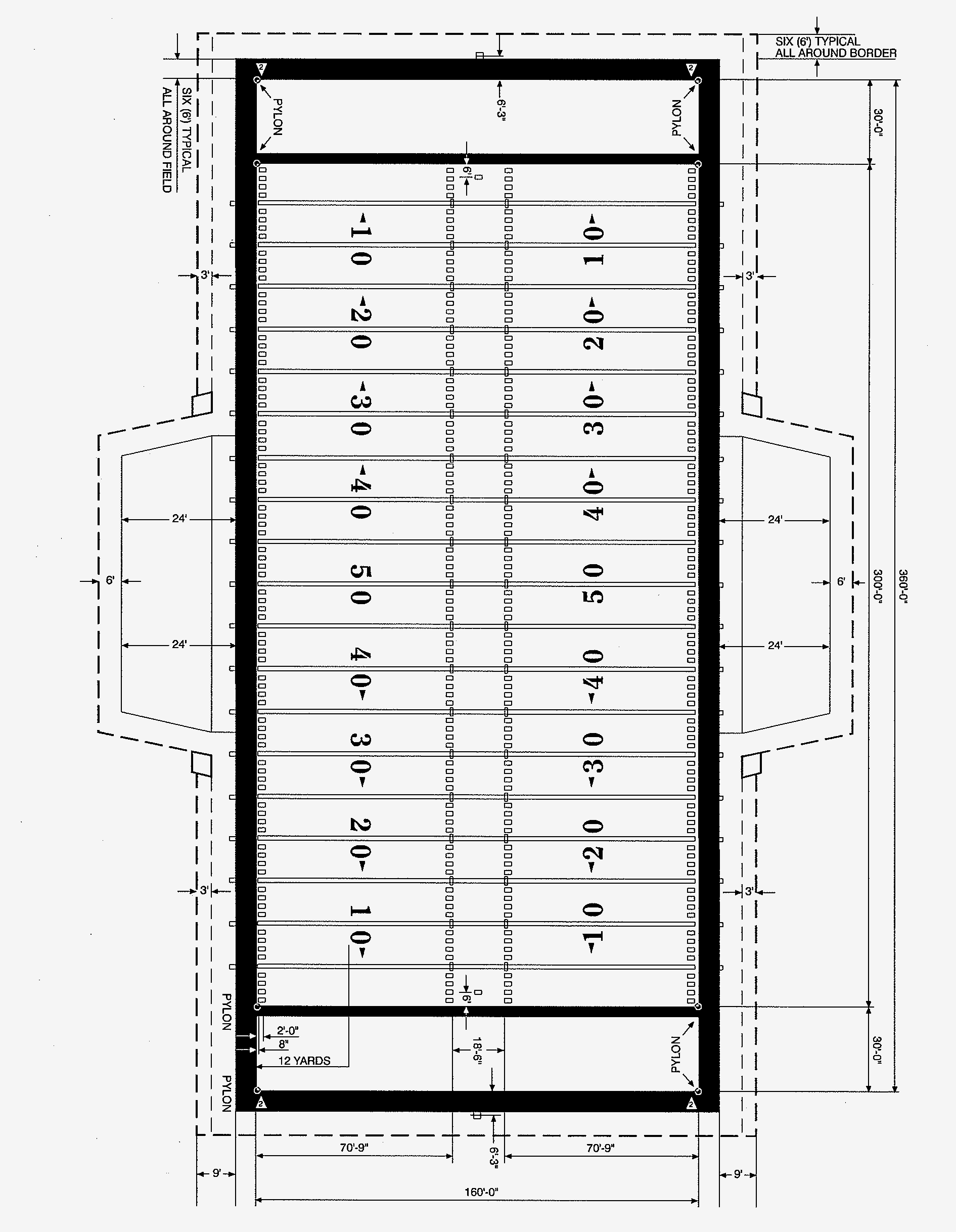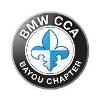
 |
 |
BMW Garage | BMW Meets | Register | Today's Posts | Search |
| 11-17-2015, 12:55 PM | #1 |
|
Lieutenant General
   
7021
Rep 10,678
Posts |
Football Pylon Placement
I thought of this the other day when I realized the pylon is placed in the white portion of the field (out of bounds)
So why is it that touchdowns are considered good when all you have to do is hit the pylon? Technically, with this placement, only the inside edge represents the "plane" of the goal line and sideline. If you hit the front edge or outer corner or the pylon, those are out of bounds and shouldn't be a touchdown. Maybe I am misinterpreting the rule, and if those parts of the pylon (front or outside edge) are in fact where contact is made then the touchdown is no good. But I am curious, as generally the accepted rule seems to be any contact with the pylon = touchdown |
| 11-17-2015, 01:07 PM | #3 | |
|
Lieutenant General
   
7021
Rep 10,678
Posts |
Quote:
|
|
|
Appreciate
0
|
| 11-17-2015, 01:45 PM | #4 | |
|
ΜΟΛΩΝ ΛΑΒΕ

818
Rep 172
Posts |
Quote:
I'm kidding of course, but have never really thought about it other than today. 
__________________
|
|
|
Appreciate
0
|
| 11-17-2015, 02:02 PM | #6 | ||
|
Lieutenant General
   
7021
Rep 10,678
Posts |
Quote:
 I think it's my physics background and understandings of 3D planes and the similarities to scoring a touchdown. So this idea was thought provoking. But the first response makes sense and is what I imagined the rule is. |
||
|
Appreciate
0
|
| 11-17-2015, 02:59 PM | #7 | |
|
Major
 997
Rep 1,003
Posts |
Quote:
NFL Rule 11, Section 2: TOUCHDOWN PLAYS Article 1 Touchdown Plays. A touchdown is scored when: (a) the ball is on, above, or behind the plane of the opponents’ goal line and is in possession of a runner who has advanced from the field of play; or (b) a ball in possession of an airborne runner is on, above, or behind the plane of the goal line, and some part of the ball passed over or inside the pylon; or (c) a ball in player possession touches the pylon, provided that, after contact by an opponent, no part of the player’s body, except his hands or feet, struck the ground before the ball touched the pylon; or (d) any player who is legally inbounds catches or recovers a loose ball (3-2-3) that is on, above, or behind the opponent’s goal line; or (e) the Referee awards a touchdown to a team that has been denied one by a palpably unfair act. ... Supplemental Note example: A.R. 11.2 Second-and-10 on B18. Runner A1 takes handoff and runs down the sideline toward the goal line with the ball in his outside arm. He crosses the goal line plane standing with the ball to the outside of the pylon. Ruling: Touchdown. Part of the ball crossing over or inside the pylon only applies to an airborne runner who lands out of bounds. Edit: What if a runner (who is NOT airborne) steps out of bounds (OOB), but PAST the goal line? Rule 1, Section 21 gives the answer. Basically, if a runner steps OOB, the ball is spotted where the ball (not the runner) crossed the OOB line. If that spot is on or past the goal line plane (which extends into infinity), then it's a TD. Ergo, in order for that to happen, the runner needs to have had the ball cross the inside of the pylon when stepping OOB (because the pylon is located outside the OOB line, as the OP noted). Last edited by schoy; 11-17-2015 at 03:17 PM.. |
|
|
Appreciate
1
|
| 11-17-2015, 03:18 PM | #8 | |
|
Banned
2130
Rep 3,553
Posts |
Quote:
|
|
|
Appreciate
0
|
| 11-17-2015, 03:23 PM | #9 |
|
Major
 997
Rep 1,003
Posts |
No, you're misrepresenting/oversimplifying the rule. See the supplemental example. A TD results when runner runs between the pylons with the ball OUTSIDE the pylon. Also, a TD results when a runner goes airborne (e.g. dives) and the point of the ball passes OVER (or into) the pylon and not necessarily the inside of the pylon.
|
|
Appreciate
0
|
| 11-17-2015, 03:37 PM | #10 | |
|
Banned
2130
Rep 3,553
Posts |
Quote:
Yes a player running, whos body crosses the goalline, does not have to have the ball inside the goalline provided it crosses the plane of the endzone. here, the body has to be in bounds, but the ball does not, provided the player is not airborne. Edit: you can apply this to anywhere on the field. For example, a player dives for a 1st down. His body is flying out of bounds, but does not touch out of bounds, and he reaches forward with the ball. Where the ball crosses, not his body, out of bounds is where it is spotted. |
|
|
Appreciate
0
|
| 11-17-2015, 03:47 PM | #11 | |
|
Major
 997
Rep 1,003
Posts |
Quote:
I'm not making this complicated. I'm just re-stating what the rule says. EDIT: I just re-read your statement. You CAN dive outside the pylon as long as the ball is INSIDE, INTO or OVER the pylon. So I guess, technically, your statement is false. |
|
|
Appreciate
0
|
| 11-17-2015, 03:50 PM | #12 |
|
is probably out riding.

6061
Rep 2,292
Posts |
1 on 1 football game to settle it.
Axius will be all time QB because he goes both ways. 
__________________
"There is no greater tyranny than that which is perpetrated under the shield of the law and in the name of justice. -Charles de Secondat"
 |
|
Appreciate
3
|
| 11-17-2015, 04:16 PM | #13 | |||
|
Banned
2130
Rep 3,553
Posts |
Quote:
Quote:
Quote:
 |
|||
|
Appreciate
0
|
| 11-17-2015, 05:05 PM | #14 |
|
Banned

4199
Rep 216
Posts |
|
|
Appreciate
0
|
| 11-17-2015, 05:20 PM | #15 |
|
Banned
2130
Rep 3,553
Posts |
|
|
Appreciate
0
|
| 11-17-2015, 05:47 PM | #16 |
|
Lieutenant General
   
7021
Rep 10,678
Posts |
I guess now I am confused, any pylon image I search on the internet, and see on tv has it located out of bounds.
The outer edge of the end zone lines up with the inner edge of the pylons.    |
|
Appreciate
0
|
| 11-17-2015, 05:54 PM | #17 |
|
Lieutenant General
   
7021
Rep 10,678
Posts |
In this replay, the pylon is out of bounds, and he "hits the pylon" granting the touchdown. But technically, with that placement I feel like just "hitting the pylon" isn't getting the ball in the "end zone"
Not sure how to embed from this site but a good example here: http://www.nfl.com/videos/nfl-game-h...n-TD-reception |
|
Appreciate
0
|
| 11-18-2015, 01:16 AM | #18 |
|
Major
 997
Rep 1,003
Posts |
I'll just leave this right here, rather than get into a protracted argument over TD/OOB minutiae and semantics:
NFL Rules, Field Markings, paragraph 5: "[P]ylons must be placed at inside edges of white lines and should NOT touch the surface of the actual playing field itself." (Emphasis added) The pylons in the above pictures seem to me to be in their correct placements based on the rule. |
|
Appreciate
1
|
| 11-28-2015, 10:35 AM | #20 |
|
Brigadier General
 
9584
Rep 4,130
Posts |
Saw that. The players leg was inside the pylon but the ball never crossed the line. I think it was the correct call and ultimately it had no impact on the game as TCU scored on the next play...
__________________
2021 X3 M40i
1974 2002tii, Inka, 5 sp manual BMWCCA # 327475  |
|
Appreciate
0
|
| 11-29-2015, 05:57 PM | #21 |
|
Lieutenant General
   5043
Rep 11,896
Posts |
I thought you can touch any part of the pylon
__________________
22 Phytonic/Coffee X5 45e (CoVID-free)
08 Speed Yellow 911 GT3 Sharkwerks 12 AW/Cinnamon X5d Sports Pkg (retired) 14 AW/Beige M6GC ZCP, MPE, V2 steering wheel, vorsteiner (retired) 08 SSII/Black E90 M3 (retired) |
|
Appreciate
0
|
Post Reply |
| Bookmarks |
|
|